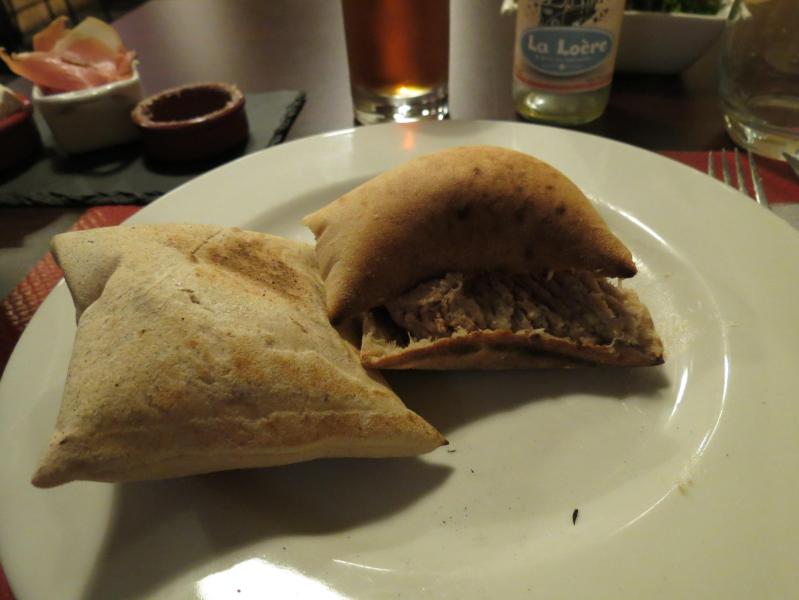- Read offline
- Access all content
- Use the in-app Map to find sites, and add custom locations (your hotel...)
- Build a list of your own favourites
- Search the contents with full-text search functionality
- ... and more!
fougasse
focaccia à la française
Every region, every family almost, has their own version of fougasse (or fouace, or fouasse): some are savoury, some sweet, some unleavened, some chewy, some made from soft brioche.
The word comes from the old Occitan fogatza via the Latin focacia (bread cooked under the ashes), ultimately derived from focus, or fire.
Common kinds of fougasse are with garlic or black olives, with lardons or grattons, with gruyère and crème fraîche, with onions and so on; some people even make them into mini pizzas.

In the Angevin, where they were made out of leftover bread, they call them fouées and fill them with rillettes or mushrooms or even beans.
In Provence the sweet fougasse, made from brioche dough and brushed with orange blossom water, is one of the Les Treize Desserts and is also known as the gibassier or la pompe à huile, ‘the oil pump’ (a bizarre name said to recall the old Provençal tradition of using flour to ‘pump’ the remains of olive oil to the bottom of the vats).
In Nice the mini version is called a fougassette. In the Auvergne they make it with candied fruit.
Images by Romain Bréget, Thomon

